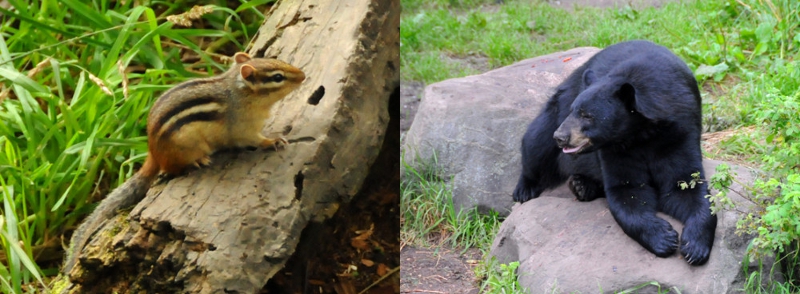Traveling in Minnesota
Famous for being America’s coldest continental state, Minnesota is sometimes nicknamed America’s icebox. Fortunately once spring and summer roll around the temperatures quickly get up in the 70s and 80s and the rest of us who aren’t so fond of the cold can visit. Most people like myself will probably start off their travels in the Twin Cities; one of the country’s largest metropolitan areas. To the north east you’ll find the largest freshwater lake in the world while the rest of the state is largely made up of beautiful wilderness. I was definitely impressed by Minnesota and think it’s probably the most interesting state to visit in the Great Lakes region!
Minneapolis & St. Paul
Click here to see Minneapolis & St. Paul
Minneapolis is one of the biggest cities along the United States northern borders. Nicknamed the ‘ice box’ of America, Minneapolis is known for its extremely brutal winters. Paired with its twin city of St. Paul, there are several attractions such as the the 19th century Fort Snelling, the famous Wabasha Street Caves, several museums and art galleries. What tops the list is the Mall of America, the largest retail complex in the country that even features an indoor amusement park!
Duluth
Click here to see Duluth
Minnesota’s forth largest city, Duluth is a perfect place to plan your adventures in the largest fresh water lake in the world. The city itself has plenty to do like its lake walk, some historic places to visit, and plenty of nice restaurants. Lake Superior is a great place for swimming, sailing, or just lounging around at one of its many beaches. There are also plenty of places for hiking and some great scenery along the coast such as Palisade head cliff.
Superior Forest
Click here to see Superior Forest
Taking up the entire northern portion of the state, superior national forest is one of America’s largest remaining wildernesses. The forest is a haven for bears, wolves, elk and moose, and home to thousands of lakes. In the winter time, the temperatures drop low enough that the water freezes with about two feet of ice, opening the door for new activities such as cross country skiing or skating.
Pipestone National Monument
Click here to see Pipestone National Monument
For centuries, various Native Americans tribes quarried in what is now Pipestone National Monument, using the red stones to carve into peace pipes. Peace Pipes were a very important part of culture for Native Americans living in the prairies. Native America’s from different tribes traveled hundreds of miles to reach this sacred ground, which was also considered a neutral place. Today the quarries can visited after a short hike, and local museums provide more details on life in the region.




